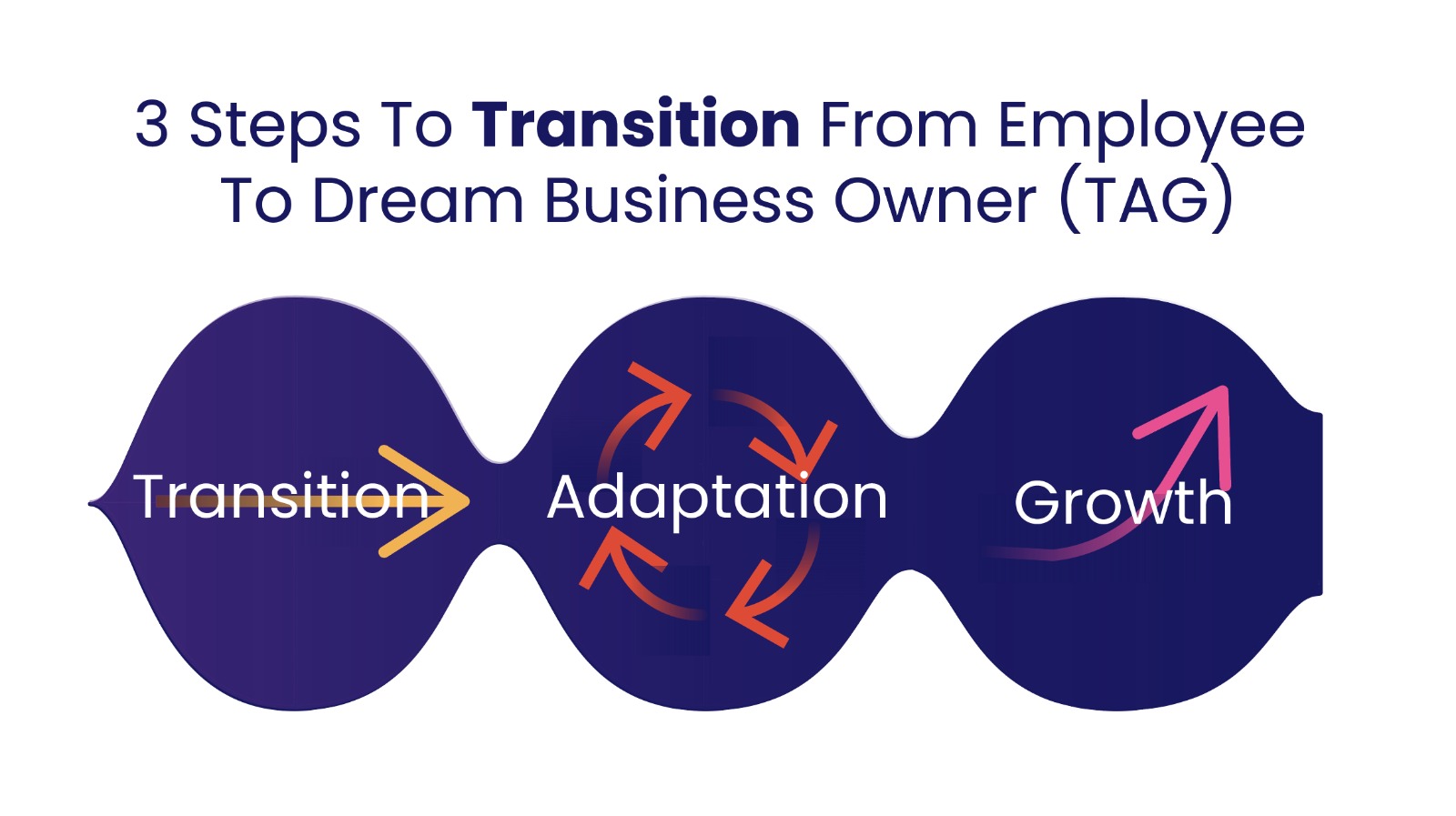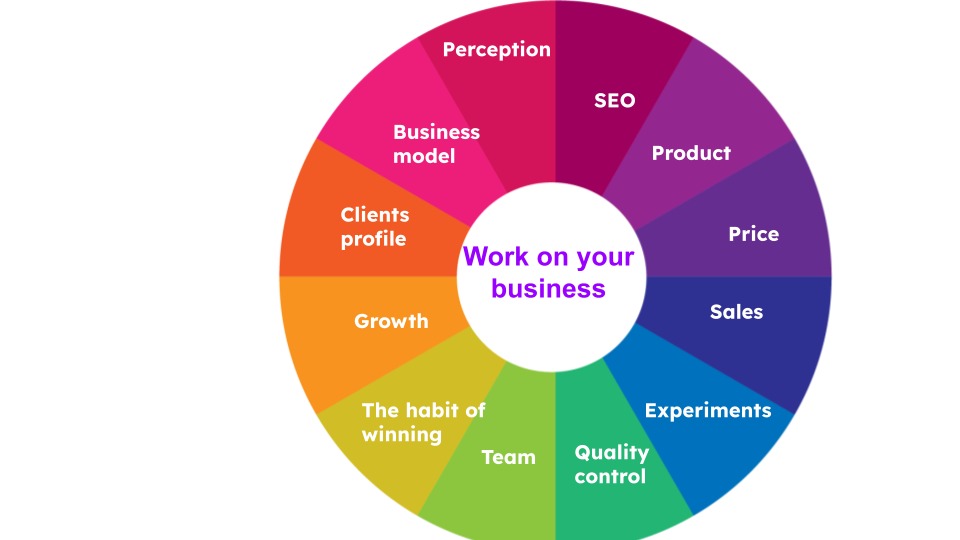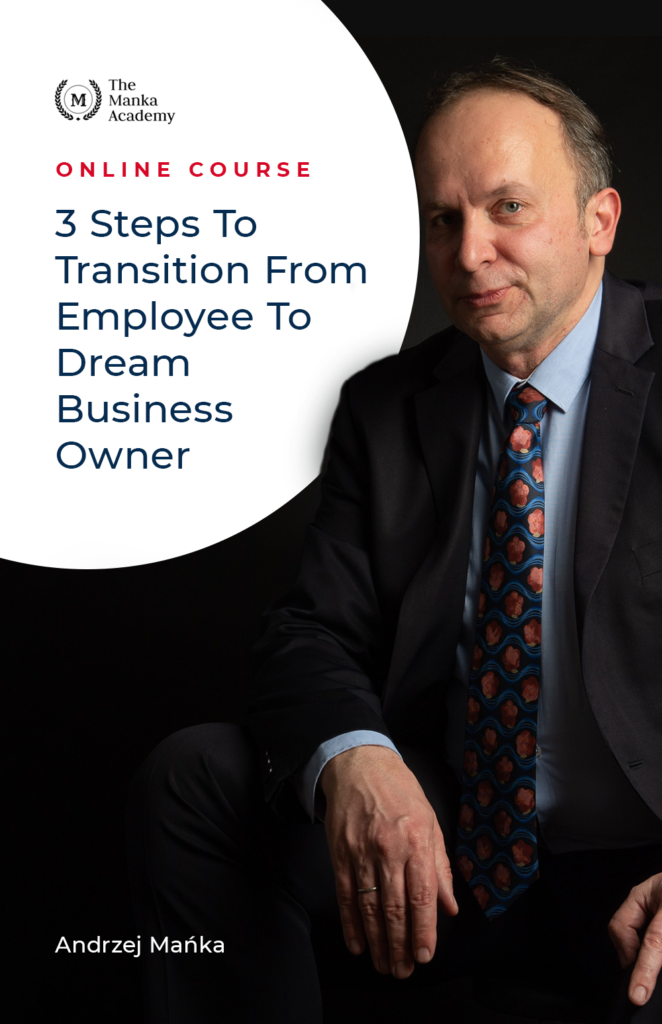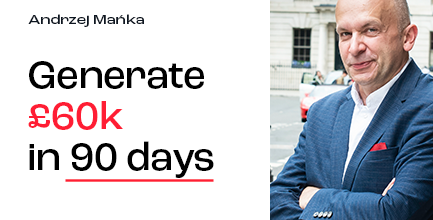3 Steps To Transition From Employee To Dream Business Owner


64% of the UK labor force wants to start a business, however 50% of them are afraid to do so. They are afraid of failure and their inevitable financial troubles if their businesses don’t work out.
From the USA, through Europe and Asia, millions of workers have quit their jobs. This phenomenon began at the end of the pandemic and has caused such huge social change that it’s gained an official title of ‘The Great Resignation’.
However, the lion’s share of those who have quit their jobs will simply apply for another job and few will start a business.
Why is that?
This is because of how the system works and what we are conditioned to do. The system we live in is created by governments, big businesses and churches and they need soldiers, bureaucrats, workers and followers.

There's a huge difference between how the employee and the entrepreneur thinks, how they interpret reality, what decisions they make and how they act. Today we will discuss these differences and discover how to make a smooth transition from being an employee to becoming a business owner.
If you want to make this transition successful you will need to prepare for a very radical change in your life. To make a smooth transition from being an employee, we need to create in our lives a moment of illumination, an aha moment. Something that helps us to see the same things in a different way. To connect dots differently and to start interpreting reality in a new, fresh way.
These moments can come in many forms, let’s have a look at different three categories of examples.
Big spiritual transformation.

My favorite example is The apostle Paul, who was an influential rabbi whose ambition was to kill as many Christians as possible. One day he traveled to Damascus and suddenly the Lord Jesus, God himself appeared to him and asked him: Why do you persecute me? This was such a shocking experience that Paul became the most prominent and influential Christian in history. This is a kind of ultimate and most radical transformation that a human being can experience.
Falling in love.

Everyone of us has experienced this state of mind, probably a couple of times in their lives. You live in the same reality, in the same place and the same time but your perception of this reality changes completely. You make different decisions and draw different conclusions from the same data, situations and events.
Reading a book. Going through an online course or a training program can provoke an Aha Moment that can change the way you live after you have studied a book or experienced a well designed training program.
I’ve created a simple but powerful and effective process that can enable everyone to go through the transformation from employment to entrepreneurship. This process was based on my own experience, the experience of clients of my company and others who have quit their jobs and set up businesses.
The process is called TAG and contains three major steps: Transition, Adaptation and Growth.

Transition. During the transition period you need to adopt the entrepreneurial spirit and learn what it takes to have a proactive attitude, how to make effective decisions and how to understand risk, uncertainty and confidence.
What is the entrepreneurial spirit?
These are three examples out of dozens of differences between you becoming an entrepreneur from being an employee.
When working for someone, you play safe and avoid taking risks. When you are a business owner however, you need to take a risk every single day. Understanding risks and managing them properly is one of the most essential business skills.
Where an employee sees uncertainty, the business owner sees opportunity. This is a matter of mental habit and practice. Confidence in what you do and in your abilities to make things happen is a choice and daily decision, not necessarily the result of external forces.
When you work for someone you don’t need to be a great leader to be successful. You need to be a specialist and know your own realm. Being an entrepreneur requires great leadership skills because you need to be able create a vision, and persuade others to follow along with this vision. You will first need to become a great example of communication skills, productivity, creativity and authority in order to lead by example.
Adaptation.
Once you start thinking like an entrepreneur and move to found your own business you will need to learn the difference between working in your business versus on your business.

When working in your business, you are actually self employed (or acting as your own employee) and won’t go too far in your business. You are accomplishing roughly the same tasks as an employee: creating content, producing, contacting customers, marketing, sales and delivery.
When you work on your business you are instead designing systems, creating teams, experimenting with your business model, developing procedures and processes, and finding business partners and investors. When working on your business, you focus on growth and leadership meant to steer your business into the future, and not daily tasks.
Growth
Moving from being an employee to a business owner is only half of what it takes to create success. You will need to grow your business quickly, otherwise you might need to apply for a job again. 9 out of 10 businesses will fail within the first year; so the question is what those other 10%, the successful businesses, do differently. What will you need to focus on not only to survive, but to thrive and to dominate in your market? You will need to learn how to grow constantly. You need to make growth an integral part of your mindset, your attitude and your daily decisions.

Running a business is a bit like kayaking against a strong current. If you stop paddling you immediately begin moving backwards.
So how should you grow your business? Let’s have a look at two examples:
When you focus only on one element of your business, for instance attracting more customers, then your business can grow but only in a limited way, in a linear trajectory.
Once you pick up a couple of additional growth elements such as attracting more customers, improving your products, designing a strategy for your customers to increase their frequency of purchase and to spend more money on every purchase, then you can create exponential growth.
Exponential growth is similar to compound interest and linear growth to simple interest. The difference is monumental, especially in the long run.
The second extremely effective strategy is to set up a strategy of constant improvement, focusing on the essential elements of your business by 1%. Consistently. All the time. One small step at a time. It’s called incremental gain or marginal gain and used systematically it is able to create a huge competitive advantage.
General Eisenhower, who was responsible for the huge military operation D-Day in 1944, said that plans are useless but planning is everything.
What did he mean by this?
I believe that through mastering the art of planning and discovering that though it is important to put all our heart and our skills into creating plans, at the same time we must accept that plans, when they are put in the practice, can't stand up to unpredictable, messy and unerringly complex reality.
Planning is a bit like a still frame in a movie. But one second of a movie contains 24 still frames. Reality is a constant change and flow of data and events.
So let’s plan meticulously. Let’s design all aspects of our projects, the best we can. And then let’s prepare for a never ending process of tweaks, adjustments and corrections.
Andrzej Manka


